Epidermal growth factor receptors are localized to lipid rafts that contain a balance of inner and outer leaflet lipids: a shotgun lipidomics study
- PMID: 15917253
- PMCID: PMC1266279
- DOI: 10.1074/jbc.M503805200
Epidermal growth factor receptors are localized to lipid rafts that contain a balance of inner and outer leaflet lipids: a shotgun lipidomics study
Abstract
The epidermal growth factor (EGF) receptor partitions into lipid rafts made using a detergent-free method, but is extracted from low density fractions by Triton X-100. By screening several detergents, we identified Brij 98 as a detergent in which the EGF receptor is retained in detergent-resistant membrane fractions. To identify the difference in lipid composition between those rafts that harbored the EGF receptor (detergent-free and Brij 98-resistant) and those that did not (Triton X-100-resistant), we used multidimensional electrospray ionization mass spectrometry to perform a lipidomics study on these three raft preparations. Although all three raft preparations were similarly enriched in cholesterol, the EGF receptor-containing rafts contained more ethanolamine glycerophospholipids and less sphingomyelin than did the non-EGF receptor-containing Triton X-100 rafts. As a result, the detergent-free and Brij 98-resistant rafts exhibited a balance of inner and outer leaflet lipids, whereas the Triton X-100 rafts contained a preponderance of outer leaflet lipids. Furthermore, in all raft preparations, the outer leaflet phospholipid species were significantly different from those in the bulk membrane, whereas the inner leaflet lipids were quite similar to those found in the bulk membrane. These findings indicate that the EGF receptor is retained only in rafts that exhibit a lipid distribution compatible with a bilayer structure and that the selection of phospholipids for inclusion into rafts occurs mainly on the outer leaflet lipids.
Figures
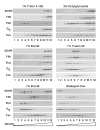

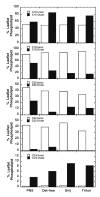
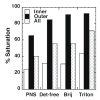
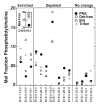


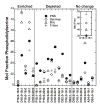
References
-
- Brown DA, Rose JK. Cell. 1992;68:533–544. - PubMed
-
- Fiedler K, Kobayashi T, Kurzchalia TV, Simons K. Biochem. 1993:6365–6373. - PubMed
-
- Prinetti A, Chigorno V, Tettamanti G, Sonnino S. J Biol Chem. 2000;275:11658–11665. - PubMed
-
- Brown DA, London E. J Biol Chem. 2000;275:17221–17224. - PubMed
-
- Edidin M. Ann Rev Biophy Biomol Struct. 2003;32:257–283. - PubMed
Publication types
MeSH terms
Substances
Grants and funding
LinkOut - more resources
Full Text Sources
Research Materials

